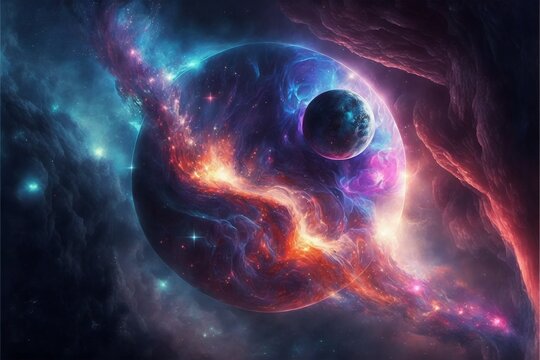
Celestial bodies
An introduction to Celestial bodies
Name: Own Teacher
Email: info@ownteacher.com
Created At: 01-11-2023
Celestial bodies
Celestial bodies are natural objects in the universe, located in space beyond the Earth's atmosphere. These objects can be broadly categorized into several types, including:
Planets: Planets are celestial bodies that orbit stars, like our solar system's planets, such as Earth, Mars, and Jupiter. They vary in size, composition, and distance from their parent stars.
Stars: Stars are massive, luminous celestial bodies that emit light and heat through nuclear fusion. Our Sun is a typical star, and there are countless other stars in the universe, each with its own characteristics.
Moons: Moons, also known as natural satellites, are celestial bodies that orbit planets. Earth's moon is an example. Moons come in various sizes and play important roles in planetary systems.
Galaxies: Galaxies are vast collections of stars, gas, dust, and dark matter held together by gravity. The Milky Way is our home galaxy, and there are billions of other galaxies in the observable universe.
Nebulae: Nebulae are clouds of gas and dust in space. They can be regions where new stars are born (stellar nurseries) or the remnants of old stars (supernova remnants).
Constellations: Constellations are patterns of stars as seen from Earth. They serve as a way to navigate the night sky and tell stories from various cultures.
Comets and Asteroids: Comets are small celestial bodies composed of ice and dust that orbit the Sun, and asteroids are rocky or metallic objects that also orbit the Sun. Both can sometimes approach Earth's vicinity.
Meteoroids, Meteors, and Meteorites: Meteoroids are small rocks or debris in space. When they enter Earth's atmosphere, they become meteors (shooting stars). If they survive the journey and land on Earth, they are called meteorites.
Black Holes: Black holes are extremely dense regions in space with gravitational forces so strong that nothing, not even light, can escape their grasp.
Exoplanets: Exoplanets are planets located outside our solar system, orbiting other stars. They are the focus of study in the search for extraterrestrial life.
Celestial bodies are of great interest to astronomers and space scientists, as they provide insights into the origins and workings of the universe. The study of celestial bodies helps us understand the nature of space, the evolution of stars and planets, and our place within the cosmos.
These are just a few examples of celestial bodies. The universe is vast and contains many more fascinating objects to explore.
Conclusion
Celestial bodies are diverse and captivating objects that exist in space. They include stars, planets, moons, asteroids, comets, and galaxies. Each type of celestial body has its own unique characteristics and plays a significant role in our understanding of the universe.
Comment List
Leave a Comment.



